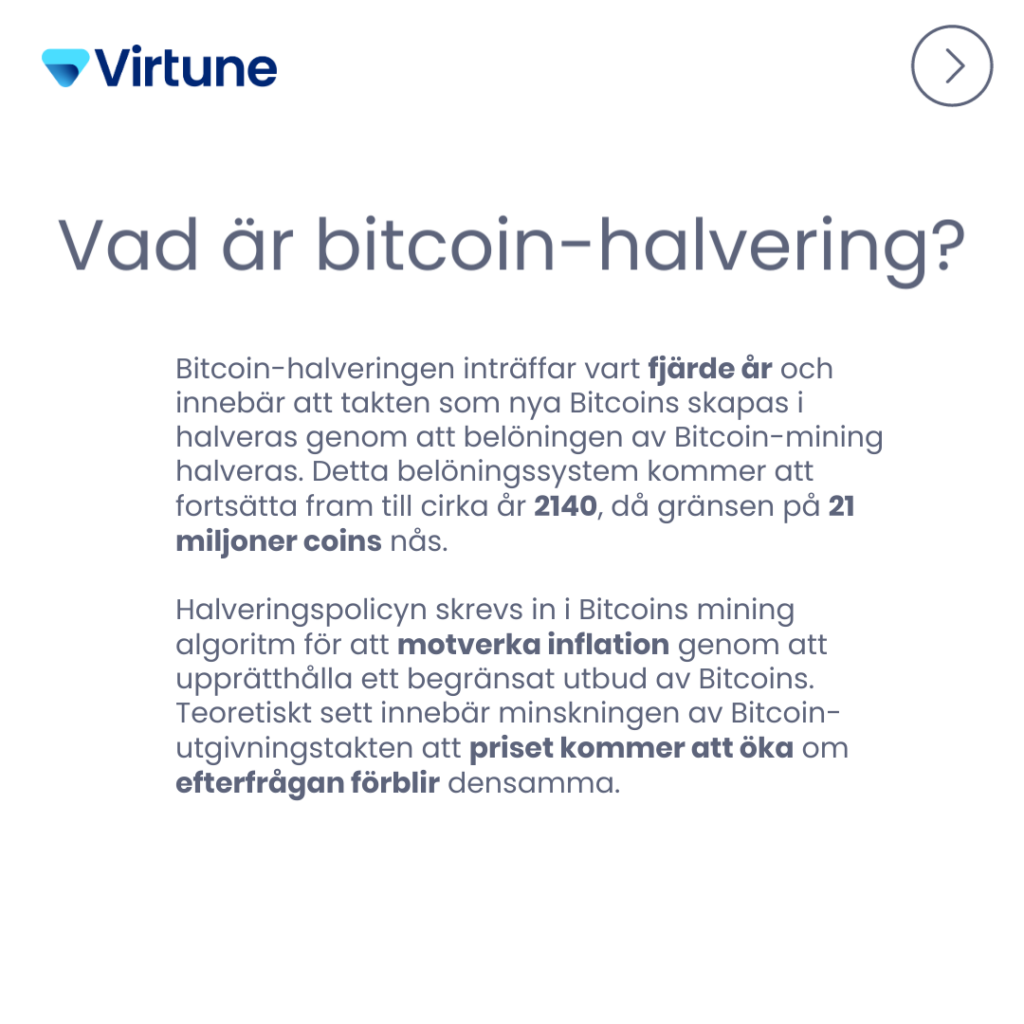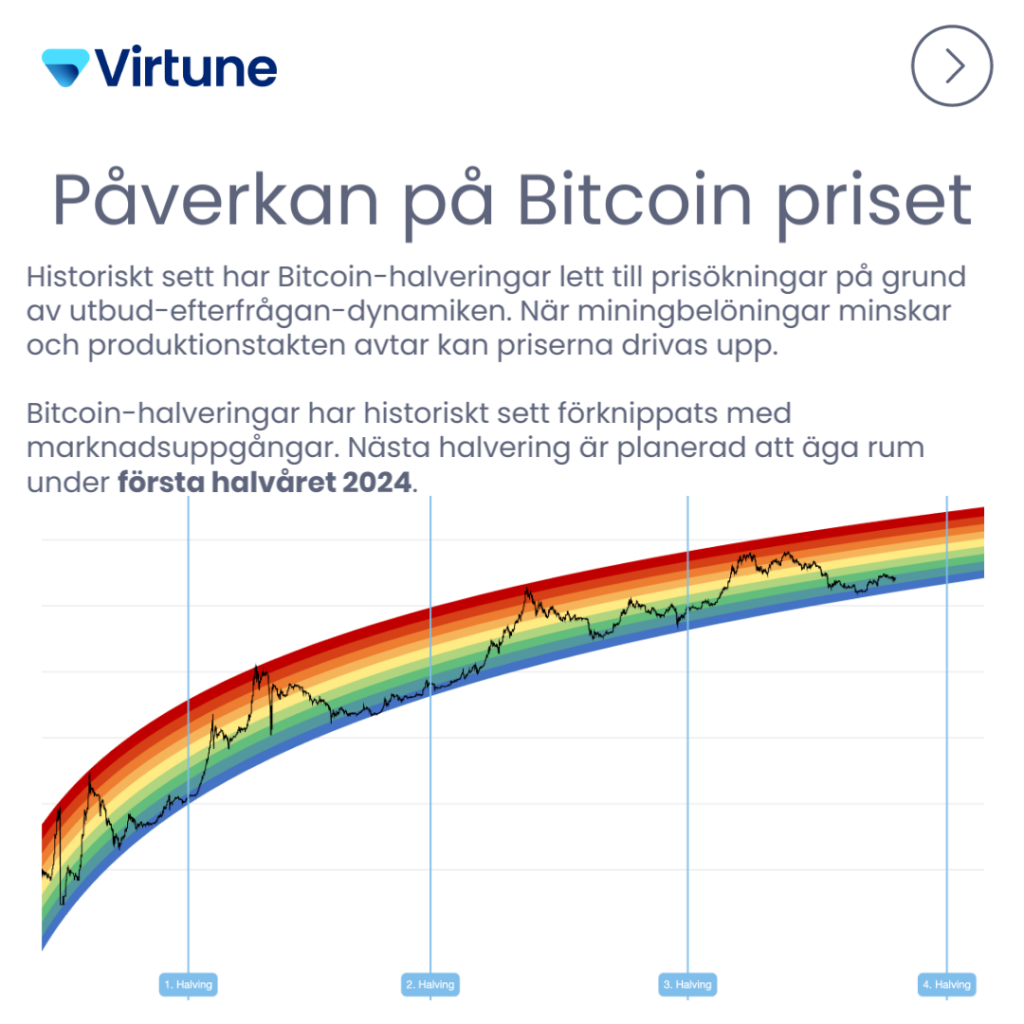What is Bitcoin halving?
A Bitcoin halving occurs every four years and involves halving the rate at which new Bitcoins are created by halving the rewards of Bitcoin mining. This reward system will continue until 2140, when the limit of 21 million coins will be reached.
The halving policy was written into Bitcoin’s mining algorithm to counteract inflation by maintaining a limited supply of Bitcoins. Theoretically, the reduction in the rate of Bitcoin issuance means that the price will increase if demand remains the same.

Impact of the Bitcoin price
Historically, Bitcoin halves have led to price increases due to supply-demand dynamics. As mining rewards decline and the pace of production slows, prices can be driven up.
Bitcoin halves have historically been associated with market rallies. The next halving is scheduled to take place in the first half of 2024.

Why does it happen?
Bitcoin halving is a feature built into the Bitcoin protocol to control inflation and ensure a limited supply in relation to demand.
It reduces the rewards miners receive for solving complex mathematical problems, which are crucial for verifying and recording transactions on the Bitcoin blockchain.
Halving the rewards reduces the rate of creation of new Bitcoins over time and limits the total number of Bitcoins that will ever exist to 21 million.

Virtune Crypto Top 10 Index ETP
Virtune Crypto Top 10 Index ETP is listed on Nasdaq and can be traded through most Swedish banks and internet brokers, such as
DEGIRO
, Nordnet and
Avanza
.

This market commentary on cryptocurrencies is published on Etfmarknaden.se with permission and in collaboration with Virtune.
Disclaimer
The cryptocurrency market commentary has been produced by Virtune. The information is reported in good faith and reflects the current views of employees, which are subject to change without notice. Virtune takes no responsibility for actions based on the information.













